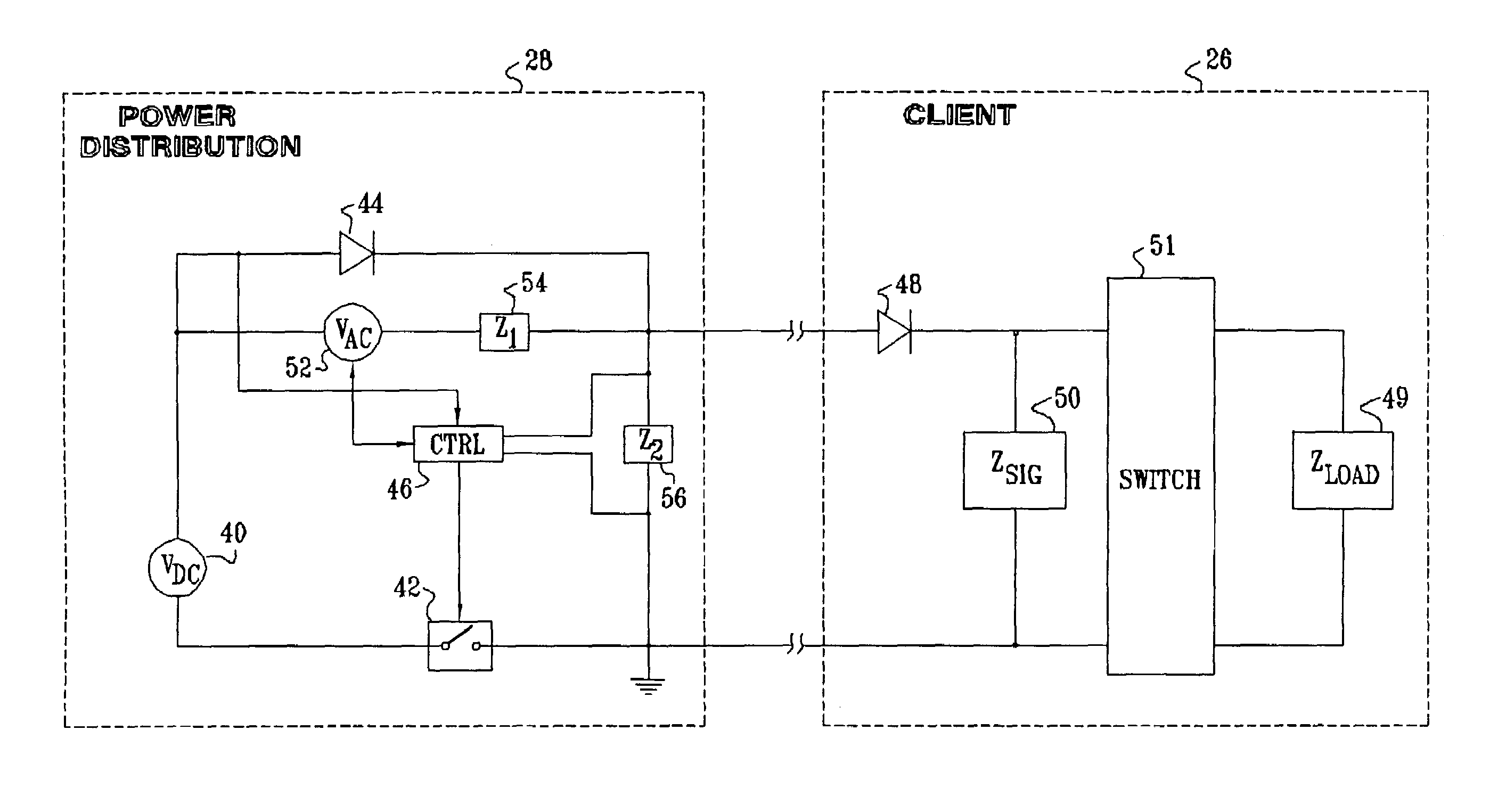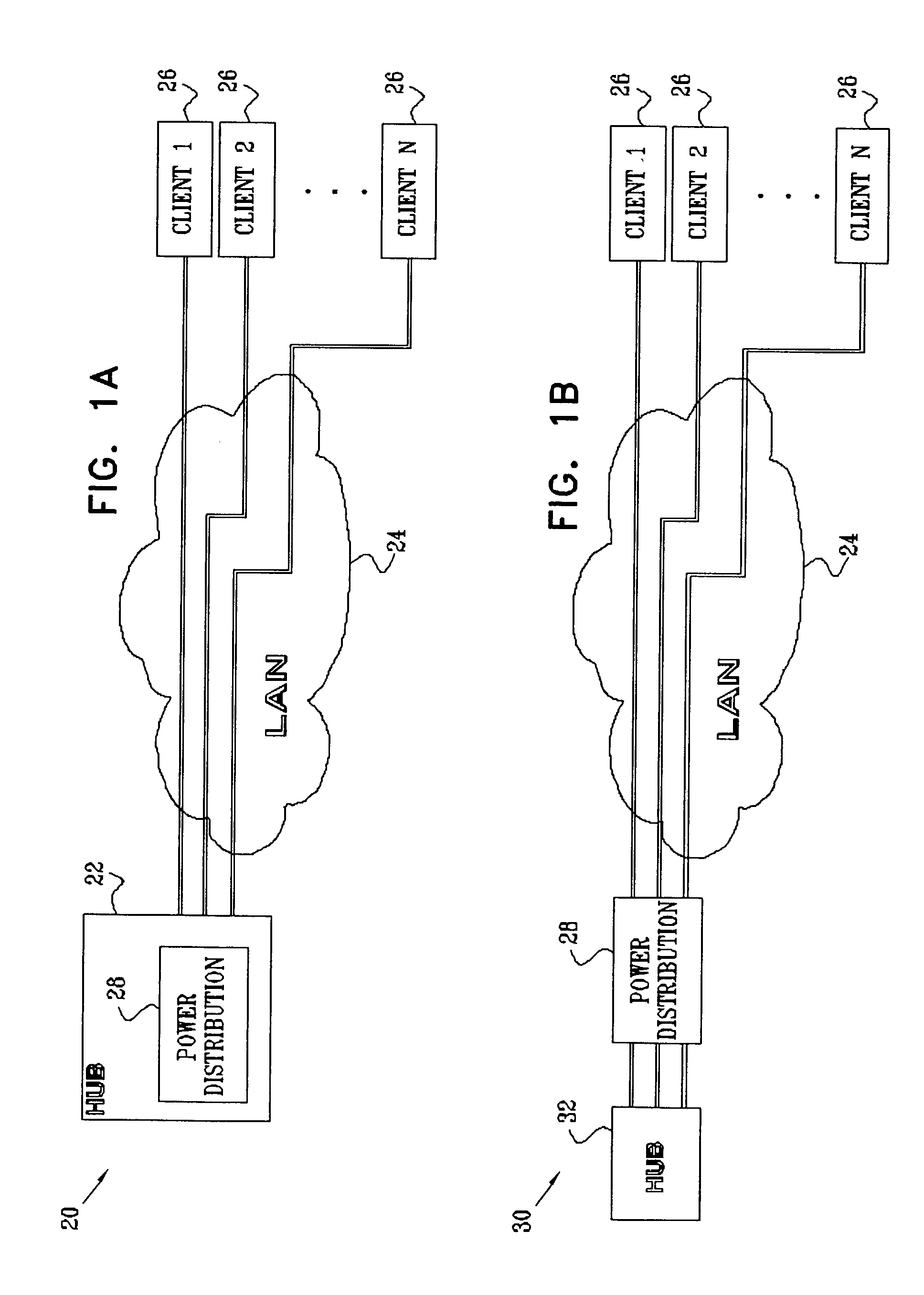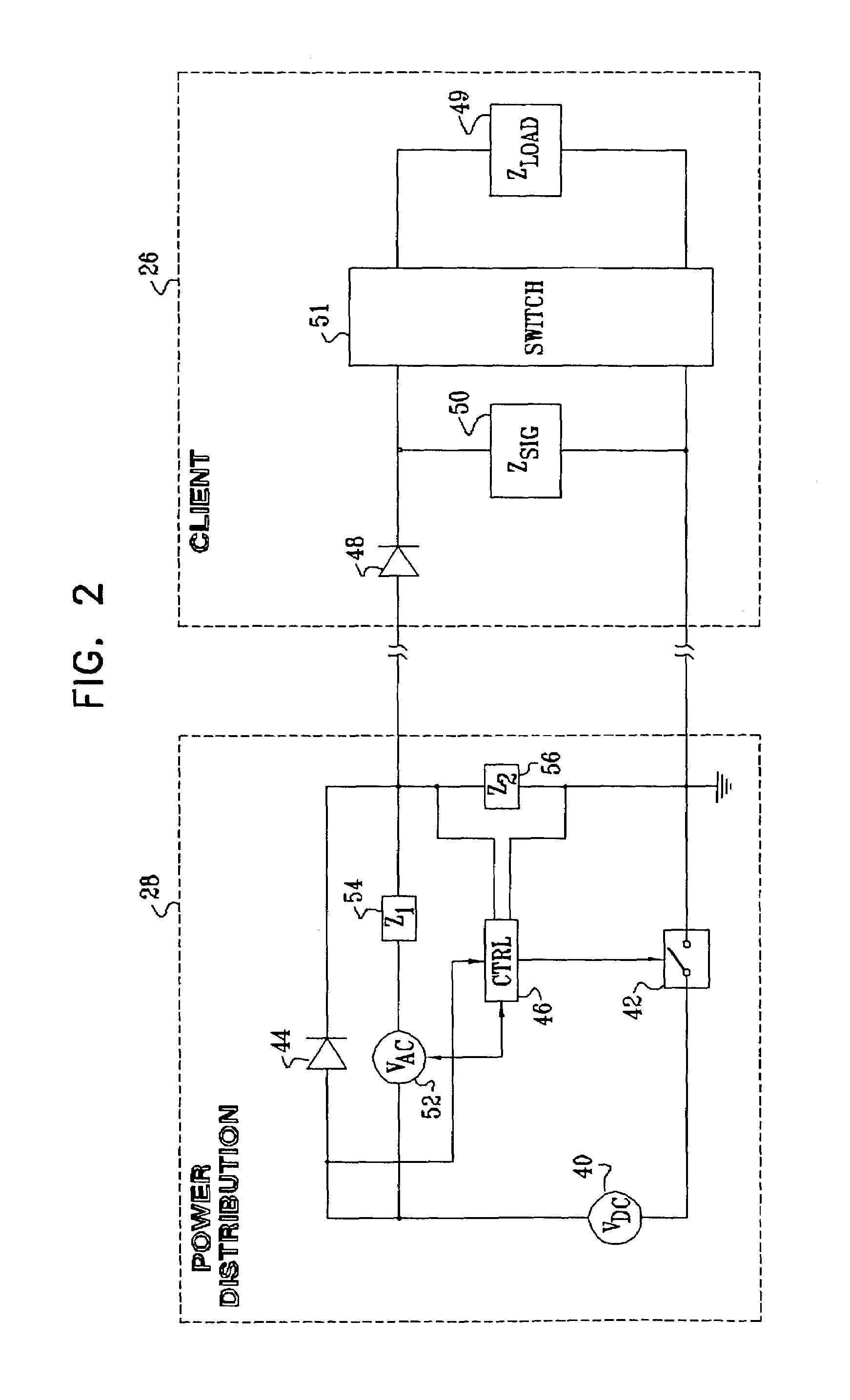Detecting network power connection status using AC signals
a network power connection and ac signal technology, applied in the field of supplying dc power, can solve the problems of a certain amount of current and no simple way under the current standard to automatically restore power
- Summary
- Abstract
- Description
- Claims
- Application Information
AI Technical Summary
Benefits of technology
Problems solved by technology
Method used
Image
Examples
Embodiment Construction
[0039]FIGS. 1A and 1B are block diagrams that schematically illustrate Power over LAN systems 20 and 30, respectively, based on the principles of the present invention. FIG. 1A shows an end-span configuration, in which a switching hub 22 comprises a master power distribution unit 28. Hub 22 communicates over a LAN 24 with single or multiple clients 26. FIG. 1B shows a mid-span configuration, in which unit 28 is located between a switching hub 32 and clients 26. In both embodiments, unit 28 supplies DC power over the LAN cables to those of clients 26 that are configured as PDs. In order to control the distribution of DC power to the clients, unit 28 couples a periodic, time-varying signal onto the LAN cables, and senses the resulting time-varying voltage on its output ports, as described in detail hereinbelow.
[0040]FIG. 2 is a block diagram that schematically shows details of power distribution unit 28 with one of clients 26, in accordance with a preferred embodiment of the present i...
PUM
 Login to View More
Login to View More Abstract
Description
Claims
Application Information
 Login to View More
Login to View More - R&D
- Intellectual Property
- Life Sciences
- Materials
- Tech Scout
- Unparalleled Data Quality
- Higher Quality Content
- 60% Fewer Hallucinations
Browse by: Latest US Patents, China's latest patents, Technical Efficacy Thesaurus, Application Domain, Technology Topic, Popular Technical Reports.
© 2025 PatSnap. All rights reserved.Legal|Privacy policy|Modern Slavery Act Transparency Statement|Sitemap|About US| Contact US: help@patsnap.com



